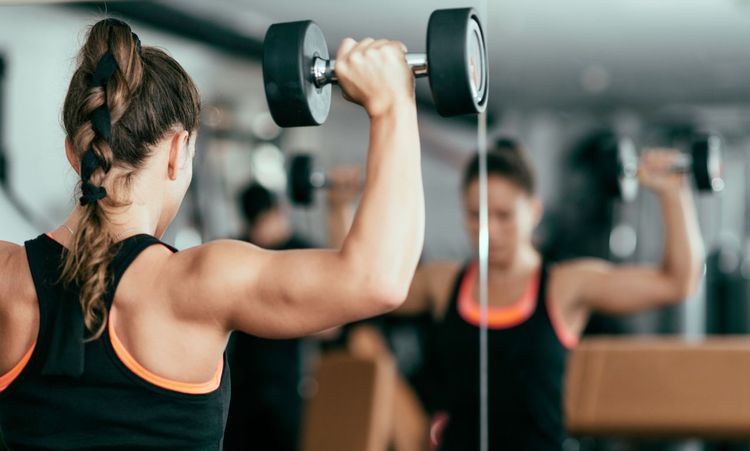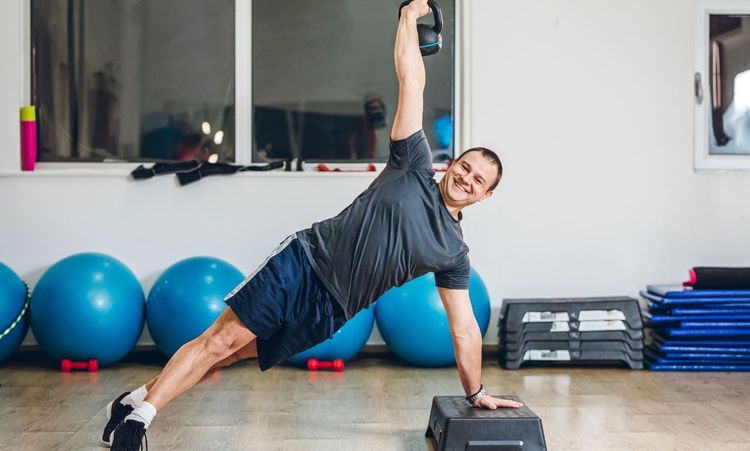Lower back pain is an unwelcome visitor that can cast a shadow over even the simplest of daily tasks. Whether it's a dull ache that lingers or a sharp, debilitating pain, the impact on your quality of life can be significant. While there are numerous approaches to alleviate lower back pain, one avenue often overlooked is the strategic use of exercise machines. But with a dizzying array of options available, you might find yourself asking, "What is the best exercise machine for lower back problems?"
This comprehensive guide delves into the world of exercise machines, specifically tailored for those seeking relief from lower back pain. We'll explore the benefits, delve into the pros and cons of popular machines, and equip you with the knowledge to make an informed decision about the best fit for your individual needs.
Benefits of Using Exercise Machines for Lower Back Health
Before we dive into the specifics of various machines, let's understand why incorporating them into your routine can be a game-changer for your lower back health.
Low-Impact Solutions for Gentle Rehabilitation
Exercise machines offer a controlled and low-impact environment, which is particularly beneficial when dealing with lower back pain. Unlike high-impact activities like running or jumping, machines like ellipticals and stationary bikes minimize jarring movements that can aggravate existing pain. This gentle approach allows you to engage in cardiovascular exercise and muscle strengthening without putting undue stress on your lower back.
Improved Cardiovascular Fitness for Overall Well-being

Maintaining good cardiovascular health is crucial for overall well-being, and this holds true even when managing lower back pain. Regular exercise on machines like treadmills or rowing machines can help improve your heart and lung function, boost circulation, and increase endurance. Improved blood flow to the lower back can aid in reducing stiffness and promoting healing.
Popular Exercise Machines for Lower Back Issues
Now, let's explore some of the most popular exercise machines and how they can be beneficial for those with lower back problems:
Elliptical Trainers
Elliptical trainers are renowned for their low-impact nature, making them an excellent choice for individuals with lower back pain. The gliding motion minimizes stress on the joints, while the handlebars provide support and reduce strain on the lower back. Additionally, ellipticals offer a full-body workout, engaging not only the legs but also the core, back, and arms, contributing to overall muscle balance and strength.
Pros:
- Low-impact: Ideal for sensitive backs.
- Full-body workout: Engages multiple muscle groups.
- Adjustable resistance: Allows for gradual progression.
Cons:
- Can be bulky: May not be suitable for small spaces.
- Limited muscle activation: Compared to more targeted exercises.
Stationary Bikes
Stationary bikes are another excellent option for individuals with lower back pain. The seated position provides support and minimizes stress on the spine, while the adjustable resistance levels allow you to customize the intensity of your workout. Cycling can help improve cardiovascular health, strengthen leg muscles, and increase endurance without putting excessive strain on your lower back.
Pros:
- Comfortable seating: Provides support for the back.
- Adjustable resistance: Allows for personalized intensity.
- Low-impact: Gentle on the joints.
Cons:
- Can be repetitive: May lead to boredom for some.
- Limited muscle engagement: Primarily targets the lower body.
Recumbent Bikes
Recumbent bikes offer an even more comfortable option than traditional stationary bikes, particularly for those with significant lower back pain. The reclined seating position with back support minimizes stress on the spine and allows for a more relaxed workout. Similar to upright bikes, recumbent bikes provide excellent cardiovascular benefits and leg strengthening without aggravating lower back issues.
Pros:
- Maximum back support: Ideal for individuals with severe pain.
- Comfortable seating: Allows for longer workout durations.
- Low-impact: Gentle on the joints.
Cons:
- Larger footprint: Requires more space than upright bikes.
- Less muscle activation: Compared to other machines.
Rowing Machines
Rowing machines provide a unique advantage for individuals with lower back pain as they actively engage the back muscles, promoting strength and stability. The pulling motion strengthens the erector spinae muscles, which play a crucial role in supporting the spine. However, it's essential to maintain proper form and start with lighter resistance to avoid strain.
Pros:
- Full-body workout: Engages multiple muscle groups, including the back.
- Low-impact: Gentle on the joints.
- Improves posture: Strengthens back muscles.
Cons:
- Requires proper technique: To avoid strain on the back.
- Can be challenging: For beginners or those with limited upper body strength.
Treadmills
Treadmills offer versatility in terms of speed and incline, allowing for a customizable workout. However, for individuals with lower back pain, it's crucial to start with a flat incline and gradually increase the intensity. Using the handrails for support can also help minimize stress on the lower back. Walking on a treadmill can improve cardiovascular health, strengthen leg muscles, and burn calories.
Pros:
- Adjustable intensity: Allows for gradual progression.
- Familiar motion: Similar to walking or running.
- Convenient: Can be used indoors regardless of weather.
Cons:
- High-impact: Can aggravate back pain if not used cautiously.
- Requires proper form: To avoid strain on the back.
Strength Training Equipment for Back Support

In addition to cardiovascular exercise, incorporating strength training exercises that target the back muscles is crucial for long-term lower back health. Here are some strength training equipment options:
Resistance Bands
Resistance bands offer a versatile and portable option for strengthening the back muscles. Exercises like band pull-aparts and seated rows can help improve posture, strengthen the erector spinae muscles, and increase back stability.
Stability Balls
Stability balls, also known as exercise balls, can be incorporated into various exercises to engage the core muscles, which play a vital role in supporting the spine. Exercises like back extensions and planks on a stability ball challenge stability and strengthen the core, indirectly benefiting the lower back.
Specialized Weight Machines
Gyms often have specialized weight machines designed to target specific muscle groups, including the back. Machines like the lat pulldown and seated cable row allow for controlled movements and progressive overload, promoting back strength and stability.
Conclusion
Finding the best exercise machine for lower back problems is a personal journey that depends on your individual needs, preferences, and fitness level. By understanding the benefits, drawbacks, and safety considerations of various machines, you can make an informed decision that aligns with your goals and helps you on your path to a pain-free back. Remember to consult with your healthcare provider or a qualified fitness professional before starting any new exercise program.




